
Jurnal Fizik Malaysia
Scope & Guideline
Empowering Researchers to Illuminate the World of Physics.
Introduction
Aims and Scopes
- Condensed Matter Physics:
The journal publishes research on the properties and behaviors of condensed matter, including studies on materials like semiconductors, superconductors, and nanostructures, utilizing experimental and computational methodologies. - Quantum Mechanics and Quantum Information:
A significant focus is placed on quantum mechanics, including quantum states, quantum walks, and applications in information technology, highlighting the journal's commitment to exploring the quantum realm. - Electromagnetism and Optics:
Research on electromagnetic properties and optical phenomena, including studies on resonators, sensors, and photonic devices, is a core area of interest, showcasing the journal's contributions to applied physics. - Astrophysics and Geophysics:
The journal explores topics in astrophysics, such as cosmic events and stellar properties, as well as geophysical phenomena, demonstrating its interdisciplinary approach to understanding the universe. - Nanotechnology and Materials Science:
Papers focused on the development and characterization of new materials, including nanomaterials and biocompatible materials, reflect the journal’s emphasis on innovative applications in technology and engineering. - Plasma Physics and Fluid Dynamics:
Research on plasma behavior and wave dynamics in different environments, including non-linear wave structures, highlights the journal's engagement with complex physical systems.
Trending and Emerging
- Quantum Technologies:
There is a noticeable increase in research related to quantum technologies, including quantum computing and quantum communication, indicating a growing interest in harnessing quantum mechanics for practical applications. - Energy Storage and Conversion Materials:
Emerging themes in energy storage, particularly with the development of solid-state batteries and gel electrolytes, showcase the journal's commitment to addressing global energy challenges. - Machine Learning in Physics:
The integration of machine learning techniques in physics research, particularly in error analysis and data interpretation, is gaining momentum, reflecting the interdisciplinary nature of modern scientific inquiry. - Environmental Physics:
Research addressing environmental challenges, such as the impact of geomagnetic storms and water resource management, signifies a trend towards applying physics to real-world issues, particularly in the context of climate change. - Nanophysics and Nanomaterials:
The exploration of nanostructures and their properties is on the rise, indicating a significant interest in the applications of nanotechnology across various fields, including electronics and materials science.
Declining or Waning
- Classical Mechanics:
Studies specifically focused on classical mechanics principles are becoming less frequent, possibly due to a shift towards more complex systems that require quantum or relativistic frameworks. - Biophysics:
Research related to biophysics, particularly studies combining physics with biological systems, has seen a decline, potentially as researchers focus more on materials science and engineering applications. - Thermal Physics:
Papers centered on thermal properties and classical thermodynamics are appearing less often, which may reflect a broader trend towards quantum thermal phenomena or energy materials.
Similar Journals

ACTA PHYSICA SINICA
Exploring New Dimensions in Physics ResearchACTA PHYSICA SINICA is a prominent journal published by the Chinese Physical Society, dedicated to the dissemination of groundbreaking research in the field of physics and astronomy. Established in 1993, this journal has consistently contributed to the scientific community by publishing high-quality articles that cover a wide range of topics within general physics and related disciplines. Although currently classified in Q4 of the physics and astronomy category by Scopus, ACTA PHYSICA SINICA plays an important role in fostering collaboration and communication among researchers in China and around the world. With a substantial readership, this journal is poised to remain a valuable resource for professionals, researchers, and students alike. By providing in-depth analysis and insights, it aims to advance the understanding and application of physical principles in various technological and scientific advancements. The journal is accessible via subscription, ensuring that contributors and readers can engage with the evolving landscape of physics research. For more information, visit the publisher's website.
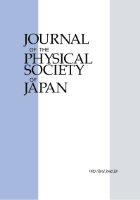
JOURNAL OF THE PHYSICAL SOCIETY OF JAPAN
Elevating the Standards of Research Excellence in JapanThe JOURNAL OF THE PHYSICAL SOCIETY OF JAPAN, published by the Physical Society of Japan, has been at the forefront of advancing knowledge in the field of Physics and Astronomy since its inception in 1946. With a commendable reputation reflected in its Q2 ranking within its category for 2023, this journal serves as a vital platform for disseminating high-quality research and innovative concepts. Researchers and professionals alike can engage with cutting-edge studies and reviews that span a diverse range of topics pivotal to the physical sciences. Although the journal does not currently operate with an open access model, it maintains a robust impact on the global physics community, evidenced by its placement in the 59th percentile among a competitive pool of 243 journals. With an unwavering commitment to bridging theory and application, the JOURNAL OF THE PHYSICAL SOCIETY OF JAPAN continues to inspire and cultivate scholarly discourse and collaboration across disciplines.
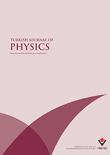
Turkish Journal of Physics
Exploring the depths of physics and astronomy.Turkish Journal of Physics, established in 1994 and published by the Tubitak Scientific & Technological Research Council Turkey, is a prominent platform for the dissemination of innovative research in the field of physics and related areas. With an ISSN of 1300-0101 and an E-ISSN of 1303-6122, this journal has carved a niche in the academic community, evidenced by its ranking within the Q3 category in the 2023 evaluation of Physics and Astronomy. As it converges its published works toward the year 2024, researchers and scholars are encouraged to engage with its rich repertoire of studies that covers general physics and astronomy, currently holding a Scopus rank of #96 out of 243, placing it in the top 60th percentile. The Turkish Journal of Physics serves as a vital resource for advancing knowledge, fostering collaborative research, and providing insights into contemporary advancements in the discipline. While it operates under a subscription model, the quality and impact of its peer-reviewed articles make it an essential read for professionals and students alike, looking to stay informed on critical developments within the physics community.

JOURNAL OF THE KOREAN PHYSICAL SOCIETY
Shaping Tomorrow's Discoveries in Physical ScienceJOURNAL OF THE KOREAN PHYSICAL SOCIETY is a prominent academic journal dedicated to advancing the field of physics, published by the prestigious Korean Physical Society. With its extensive contribution to the scientific community since its inception in 1996, this journal serves as an essential platform for the dissemination of innovative research findings in various branches of physical science. Despite its current categorization in Q4 and a ranking reflecting its early-stage impact relative to peers, it remains a valuable resource for researchers, professionals, and students eager to explore developments in general physics and astronomy. The journal is accessible in both print and electronic formats, making it convenient for a global audience. Each issue aims to foster collaboration and knowledge-sharing within the field, ensuring that it remains relevant and instrumental in shaping future research directions. Located in South Korea, the journal continues to nurture a vibrant academic community, contributing to the ongoing dialogue in the global scientific arena.

European Physical Journal Plus
Bridging Disciplines for Groundbreaking InsightsThe European Physical Journal Plus, published by Springer Heidelberg, is a reputable open-access journal that serves as a vital platform for innovative research across various disciplines, including physics, astronomy, and chemical engineering. With an impressive impact factor reflected by its Q2 ranking in both Fluid Flow and Transfer Processes and Physics and Astronomy (Miscellaneous) categories, this journal plays a crucial role in disseminating high-quality research findings. Since its inception in 2011, it has fostered interdisciplinary collaboration and encourages the exploration of fundamental principles and applications. The journal also boasts a respectable Scopus rank, indicating its solid influence and reach within the scientific community. Researchers, professionals, and students alike will find the journal to be an essential resource for staying abreast of advancements and trends in these dynamic fields, while its open-access model ensures that valuable insights are accessible to a broader audience.
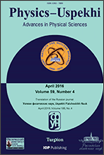
PHYSICS-USPEKHI
Fostering Collaboration in the Heart of PhysicsPHYSICS-USPEKHI, published by Uspekhi Fizicheskikh Nauk, is a prominent peer-reviewed journal in the field of physics and astronomy, reaching researchers and professionals since its inception in 1993. With an ISSN of 1063-7869 and an E-ISSN of 1468-4780, this esteemed journal has been classified as Q2 in the Physics and Astronomy category based on the 2023 quartiles, ranking 74 out of 243 journals in its Scopus classification, placing it in the 69th percentile. Although currently not an open access journal, it provides invaluable insights and advancements in the field, fostering an environment for scholarly exchange and collaborative research. Based in Moscow, Russia, PHYSICS-USPEKHI continues to shape the landscape of theoretical and experimental physics, inviting submissions that contribute to its rich legacy of high-impact scientific discourse.
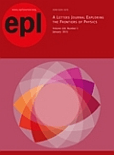
EPL
Innovative Insights, Transformative DiscoveriesEPL, a prominent journal published by IOP Publishing Ltd, stands at the forefront of the field of Physics and Astronomy. With a history of impactful contributions stretching from 1986 to 2024, EPL serves as a dynamic platform for researchers to disseminate their pioneering findings and innovative ideas. The journal, with a current category ranking of Q2 among its peers and a competitive Scopus rank of #101 out of 243 in the general physics and astronomy category, reflects its substantial reputation and contribution to the scientific community. Although it operates under a traditional subscription model, EPL's reach is extensive, enabling access to a diverse readership that includes academicians, industry professionals, and students alike. By fostering interdisciplinary collaboration and promoting rigorous research, EPL continues to play a vital role in shaping the future of physics and astronomy.
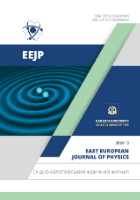
East European Journal of Physics
Showcasing the brilliance of Eastern European science.The East European Journal of Physics, published by the V N Karazin Kharkiv National University, is a dynamic open-access journal dedicated to advancing research in the fields of Physics and Materials Science. Since its inception in 2014, the journal has become a platform for scientists and academicians throughout Eastern Europe and beyond, fostering collaboration and dissemination of innovative studies and findings. With its ISSN 2312-4334 and E-ISSN 2312-4539, it attracts a global readership and submissions that are rigorously peer-reviewed to ensure the highest scholarly standards. Despite currently holding a Q4 category ranking in both Materials Science and Physics and Astronomy, as well as modest Scopus rankings, the journal is positioned to play a crucial role in elevating the visibility and impact of research emanating from this geographically and scientifically significant region through an open access model. This commitment to open scholarship is critical for fostering academic exchange and impact, making the East European Journal of Physics a valuable resource for researchers, professionals, and students seeking insight into the latest developments within these fields. Join us in exploring the frontiers of knowledge and innovation from Ukraine and its surrounding areas.
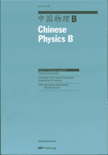
Chinese Physics B
Bridging disciplines to enhance our understanding of the universe.Chinese Physics B, published by IOP Publishing Ltd, is a distinguished journal in the field of Physics and Astronomy, offering a platform for researchers to disseminate cutting-edge studies and advancements. With an ISSN of 1674-1056 and an E-ISSN of 2058-3834, this journal emphasizes open access, ensuring that groundbreaking research is readily available to a global audience. Reflecting its commitment to quality, Chinese Physics B is categorized in the Q3 quartile (2023) in its subject area and ranks 118 out of 243 among its peers in general physics and astronomy according to Scopus, placing it in the 51st percentile. Publishing since 2008, the journal not only maintains a rigorous peer-review process but also aims to foster collaboration among academics in various physics disciplines. With its base in the United Kingdom, Chinese Physics B remains a crucial resource for those seeking to stay abreast of developments in the diverse world of physics.

Lithuanian Journal of Physics
Advancing the Frontiers of Physics and AstronomyWelcome to the Lithuanian Journal of Physics, an esteemed publication helmed by the Lithuanian Physical Society, dedicated to advancing the field of physics and astronomy. Established in 2008 and continually publishing insightful research through 2024, this journal aims to provide a platform for high-quality scholarly articles that contribute to the understanding of various physical phenomena. With a steady presence in the academic landscape, the journal is currently ranked in the fourth quartile of the Physics and Astronomy category and is positioned at the 18th percentile in its Scopus ranking, reflecting its niche focus and accessibility for researchers and students alike. Although currently not operating under an open access model, the journal remains a vital resource for professionals seeking to stay informed on the latest developments in the field. The Lithuanian Journal of Physics invites contributions that inspire collaboration and innovation in physical sciences, making it an invaluable resource for the global scientific community seeking to expand knowledge within this dynamic field.